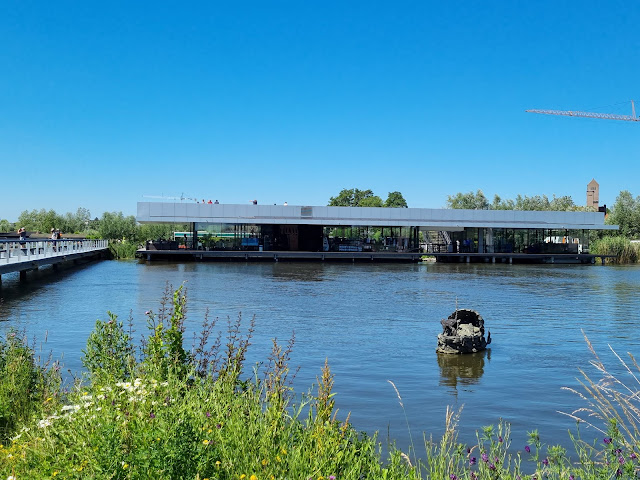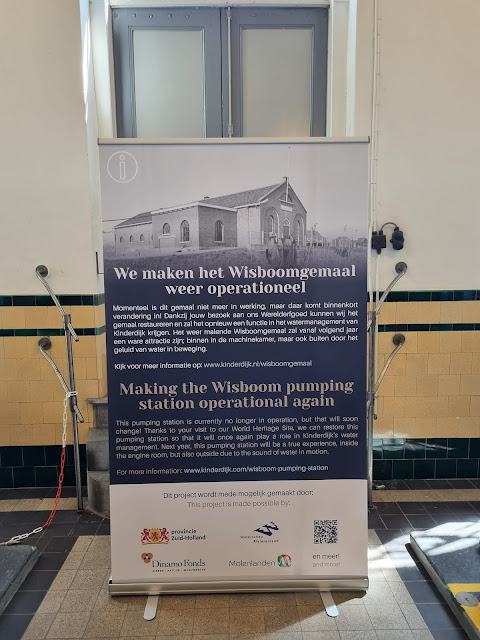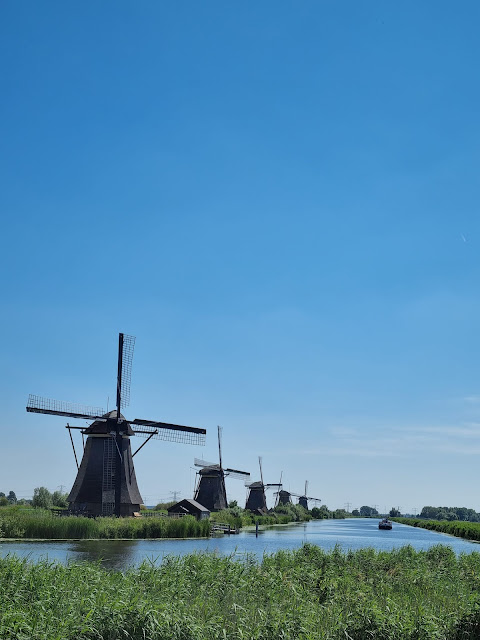"We take photos as a return ticket to a moment otherwise gone."
Kinderdijk
Kinderdijk is a village located in the municipality of Molenlanden which is 15km east of Rotterdam. The UNESCO world heritage since 1997, housed 19 windmills from the 19th century.
Getting lost in the world of windmills, water, and the determination of the Dutch.
Kinderdijk is not only a park full of canals and windmill, but also very educational to us to understand the creative system of the water pump stations and windmills. Per ticket cost EUR16.
 |
| The whole journey is near 2hrs |
 |
| Tram station just outside the train station. |
Access to Kinderdijk
From Rotterdam Erasmus Ferry Terminal, take Boat Line 21 to reach Kinderdijk directly. This trip will takes 30 minutes, however the boat service is not available on our date of visit. The tram station is located just outside of Rotterdam Train Station. We took tram 23 heading to Beverwaard, and alight at tram stop Rotterdam P+R Beverwaard and walk 2 minutes to the bus stop.
 |
| Clean interior |
 |
| There are charging port attached at the seats. |
History of Kinderdijk
Long ago, the polder (a piece of low-lying land reclaimed from the sea or a river) in the region here is always overflowed with waters.
Everything here lies below sea level, so the lives of the people here are at the mercy of the wind and water for centuries
To drain the polder, a system of 19 windmills is created centuries ago to prevent the feet of the people here from getting wet.
 |
| This place is really very beautiful |
The Millers of Kinderdijk
For centuries (since 1746), The Hoek Family has been living in Kinderijk, today the tenth generation of the family are staying in Nederwaard's windmill number 4 and 5. The forefathers were the great who fought the floods during those days.
What are Windmills used for ?
The Dutch held high regards on their windmills that a special day is dedicated to these well adored windmills. The whole country celebrates "National WIndmill Day" on the 2nd Saturday of May annually. On this day, all the windmills throughout the country will be decorated with flowers , angels, or national flags and free entry for all visitors. 1) Draining the lowlands of excess water to reclaim polders
2) Flour out of grains
3) Force oil from seeds
4) To saw wood
5) To generate electricity
 |
| See the cradle ? |
The Legend of Kinderdijk
Thousands of people drowned in the infamous Saint Elizabeth's flood on a stormy night of November in 1421. When the flood subsided, village went out to check on the damages that had befell on them. The saw a cradle with a crying baby floating on the water and there was a cat keeping the cradle in balance from sinking by keep jumping in and out of the cradle. The baby was saved by the villagers.
Wisboom Pumping Station
This Pumping station has been servicing the village via steam power since 1868.
 |
| Happy Boy playing with the mills models |
Windmills Nederwaard and Windmills Blokweer
There are two of the mills are opened daily to the public. Each one has its own unique story. Admission ticket included the entries to both mills' museums.
The Nederwaard Windmills
These stone made windmills of Nederwaard mill water to the upper basin. We can visit the mill to understand how miller Hoek used to live here with his wife and 13 children
Built in 1738, this old engine is still in prime shape. Everything here tells us the story of the past. There are items on displayed which were used by the miller families back then. Take note on the narrow steep stairs here.
Boat Tour in Kinderdijk
Boarding pass for the Boat Tour is included in the admission ticket. In times of bad weather, this boat tour will be cancelled.
Experienced and friendly crews who are ready to answer all our questions.
Though it was a super sunny day, we still get to enjoy gentle breeze while gliding through the UNESCO heritage on the boat. It is truly anothrt another way to immerse ourselves in the land of windmills.
The Blokweer Polder windmill
This mill is different from the other mills here, it was built in 1630. There is a yard with a small plot for vegetables and some small animals waiting to be pet.
Here, you can see miller around in their traditional clothes for visitors to have a better understanding of the miller's trade in real life.
See the interior of the mills, most of the stuff here are from long long time ago.
There is even a water wheel which mill the water up for more than a metre into the basin.
Go around the mill, you can see the small vegetation, goats and chicken. There is even a cafe for guest to have a break.
We have come to the end of this blog. Meanwhile here are some blogs I like to share :
Feel free, you are most welcome to browse through my other blogs to Denmark, Japan, China, Thailand, Malaysia and cruises etc. I will be deeply appreciate if you can like my facebook page:: followblueginger
Thank you for dropping by.
Wish you good luck. 😄








.jpg)












.jpg)
.jpg)





































No comments:
Post a Comment